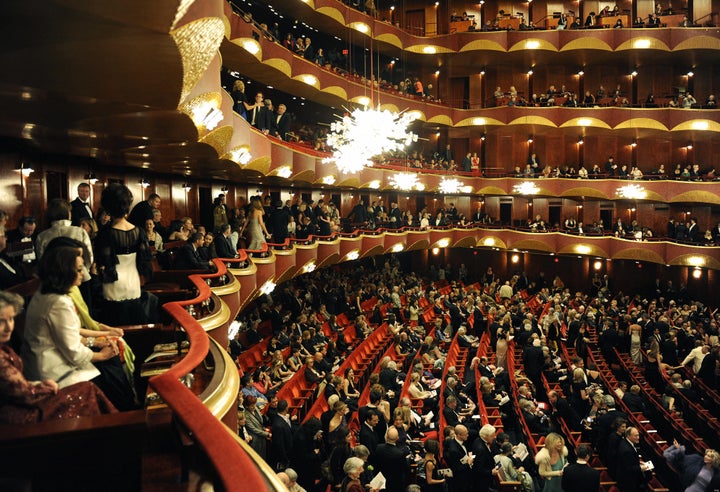
There is a disturbing trend in the American musical theater. Producers are reducing the size of orchestras for most revivals and new musicals are being written with smaller ensembles versus the large scale orchestras that I grew up expecting to hear in the theater. I appreciate the pressure to reduce costs of production. Anyone working in the live performing arts appreciates that because we do not increase productivity year in and year out, as other industries do, the arts suffer from a higher rate of inflation than in other sectors. There are no fewer roles in "My Fair Lady" now than when it was written. And we do not perform "Fiddler on the Roof" faster every year. As a result, costs rise very fast in the live performing arts.
This problem is exacerbated by another economic reality. Because we do not add seats to our theater every year, our real earned income does not grow. Once we fill the seats in the theater, there is no way to increase real ticket revenue. These two problems create a growing gap between expenses and income. It is no wonder so many Broadway shows are forced to close prematurely. Unless every seat is filled, with modest expenditures on marketing, the costs overwhelm the income.
In an effort to fill this gap between expenses and revenue, producers have pursued two strategies: raising ticket prices and lowering costs.
Unfortunately, ticket prices on Broadway have been raised so often that most people cannot attend the theater regularly. This has reduced the pool of potential ticket purchasers substantially, raising the costs of marketing.
So naturally, attention has turned to ways to reduce other costs.
But cutting the size of the orchestra and replacing acoustic instruments with synthesizers does not only reduce cost; it also reduces quality. Some of the audiences may be fooled, but an ensemble of nine instruments cannot produce the same sound, the same overtones, and the same sense of excitement as an orchestra of 28. The glory of some of the recent revivals on Broadway -- "South Pacific" and "West Side Story" come to mind, is that a full orchestra is employed. The feeling one gets simply from hearing the orchestra tune before the curtain rises is an integral part of the magic of live theater.
Unfortunately, to sell higher price tickets, producers have had to resort to stunt casting, bringing major stars from movies and television; in many cases, to pay these celebrities, and the high costs of sets, costumes, stagehands, etc., producers are sacrificing the music in musical theater.
Too many not-for-profit theaters have followed this trend. It is now considered acceptable to perform the great works from the musical theater canon with tiny ensembles and electronic sound. We are in danger of undermining the quality of one of America's great contributions to the world of the arts. At the Kennedy Center, we use the original orchestrations for every musical we produce. Just as we would not reduce the size of our National Symphony Orchestra, or cut the number of swans in "Swan Lake," we will not reduce the orchestra size for "Mame" or "Ragtime" or "Sweeney Todd." Our audiences have come to expect the true sound of a musical. It is time for others to follow suit.
